When it comes to comfort food, few dishes can rival the heartwarming flavors of Sinigang recipe. This Filipino sour soup is not only beloved for its bold, tangy taste, but it’s also a dish that brings families together. Whether you’re craving something sour, savory, and satisfying, or simply looking for a new soup recipe to try, Sinigang is a fantastic choice.
Moreover, this dish is incredibly versatile. Traditionally made with beef, it can also be prepared with shrimp, beef, or fish, depending on your preference. In addition, the combination of tamarind, tomatoes, and fresh vegetables creates a broth that is both refreshing and deeply flavorful.
But that’s not all! Sinigang recipe is not just about its irresistible taste—it is also packed with nutrients. Thanks to the assortment of vegetables, this dish provides a healthy balance of vitamins and minerals. So, if you’re looking for a delicious yet nourishing dinner idea, this Sinigang Recipe is a must-try.
Now, let’s dive into the ingredients, variations, and step-by-step instructions to make the perfect bowl of Sinigang recipe. Whether you’re a seasoned cook or a beginner in the kitchen, this recipe will guide you through every step—ensuring you achieve that signature sour and savory taste.
What is Sinigang recipe?
Sinigang recipe is a classic Filipino soup known for its tangy and savory broth, which is usually made using tamarind, tomatoes, and a mix of fresh vegetables. Unlike other soups that rely on creamy or rich bases, Sinigang stands out because of its bold sourness, which perfectly complements the tender meat or seafood used in the dish.
Furthermore, Sinigang recipe is deeply rooted in Filipino culture. It is commonly served during family gatherings, celebrations, and rainy days, as its warm and comforting flavors make it an ideal meal for any occasion. Additionally, its versatility allows people to customize the dish based on personal preferences—whether using beef, shrimp, or fish, the signature tangy taste remains the same.
But that’s not all! In addition to being delicious, Sinigang is also a nutritious dish. Since it contains a variety of vegetables like radish, okra, eggplant, and water spinach, it provides essential vitamins and minerals. As a result, it is often considered a well-balanced meal that is both healthy and satisfying.
Ultimately, Sinigang is more than just a soup—it is a symbol of Filipino hospitality and culinary tradition. Whether enjoyed on its own or paired with steamed rice, this dish never fails to bring comfort and joy to those who taste it.
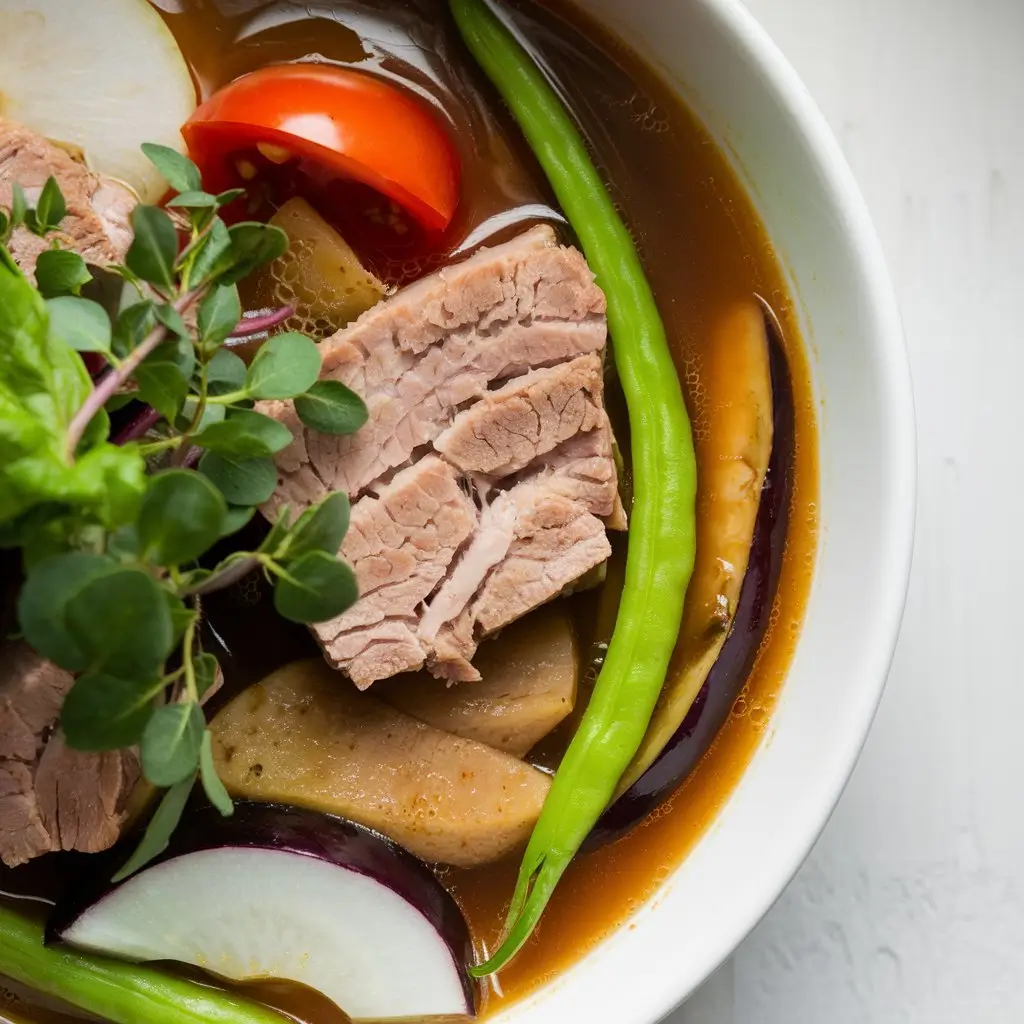
Ingredients for Sinigang Recipe
To create the perfect Sinigang, you need a combination of fresh vegetables, tender meat, and a flavorful souring agent. First and foremost, the star of this dish is the tangy broth, which is traditionally made with tamarind. However, other ingredients such as calamansi, green mango, or guava can also be used for a unique twist.
Moreover, Sinigang is known for its hearty mix of vegetables, which enhance the flavor and add essential nutrients to the dish. In addition, the choice of protein – whether beef, shrimp, or fish—determines the overall taste and texture of the soup.
Main Ingredients:
- 2 lbs beef belly (liempo) or beef ribs – for a rich, flavorful broth
- 8 cups water – the base of the soup
- 2 large tomatoes, quartered – to add a mild sweetness and depth
- 1 large onion, sliced – enhances the savory flavor
- 1 packet tamarind soup base (or ½ cup fresh tamarind pulp) – the key ingredient for the sour taste
- 1 cup radish (labanos), sliced – adds crunch and slight peppery notes
- 1 cup eggplant (talong), sliced – absorbs the flavors of the broth
- 1 cup okra – brings a subtle thickness to the soup
- 1 cup string beans (sitaw), cut into 2-inch pieces – for added texture
- 1 cup kangkong (water spinach) – a traditional leafy green for freshness
- 2 pieces green chili peppers (siling haba) – optional, for a hint of spice
- 2 tbsp fish sauce (patis) – enhances umami flavor
- Salt and pepper, to taste – balances the flavors
Alternative Souring Agents:
- Calamansi juice – for a citrusy tang
- Green mango slices – for a fruity sourness
- Guava puree – for a mildly sweet and sour broth
Ultimately, using fresh ingredients ensures that your Sinigang is as flavorful and satisfying as possible. Now that we have all the ingredients ready, let’s move on to the step-by-step instructions to bring this delicious dish to life!
Step-by-Step Guide to Cooking Sinigang Recipe
Now that we have gathered all the fresh and flavorful ingredients, it’s time to bring this comforting dish to life. First and foremost, the secret to a delicious Sinigang lies in properly preparing each component. From boiling the meat to adding the vegetables at the right time, each step plays a crucial role in achieving the perfect balance of flavors.
1: Prepare the Ingredients for Sinigang Recipe
Before anything else, wash and chop all the vegetables into uniform sizes. This not only ensures even cooking but also makes the dish visually appealing. Meanwhile, if you are using fresh tamarind, boil it in a small pot until soft, then mash and strain the juice to extract its natural sourness.
2: Sauté the Aromatics
To begin with, heat a large pot over medium heat. Next, add a little oil and sauté the onions and tomatoes until they become soft and fragrant. As a result, the base of your broth will have a deeper, richer flavor.
3: Boil the Beef
- Once the aromatics are ready, add the beef belly or ribs and stir for a few minutes until lightly browned.
- Then, pour in the water and bring it to a boil.
- After that, skim off any scum or impurities that rise to the surface. This is important because it ensures a clear and clean broth.
- At this point, reduce the heat and let it simmer for 45 minutes to an hour or until the beef becomes tender.
4: Add the Tamarind Base
- Once the beef is fully cooked, stir in the tamarind soup base or fresh tamarind extract.
- Then, let it simmer for another 5 minutes so the sourness is fully infused into the broth.
- If needed, adjust the sourness to your preference by adding more tamarind or a teaspoon of sugar to balance the flavors.
5: Add the Vegetables
- Now that the broth is rich and flavorful, it’s time to add the vegetables. First, toss in the radish, eggplant, and okra, then let them cook for about 5 minutes.
- Next, add the string beans and green chili peppers and allow them to cook for another 3 minutes.
- Finally, add the kangkong (water spinach) and turn off the heat. The soup’s residual warmth will gently cook the leafy greens without over-softening them.
6: Season and Serve
- At this stage, season your Sinigang recipe with fish sauce, salt, and pepper to taste.
- For extra heat, you can crush the chili peppers into the broth.
- Lastly, serve the soup piping hot alongside a bowl of steamed white rice for the ultimate Filipino meal experience.
Final Thoughts
And there you have it! By following these steps carefully, you’ll end up with a Sinigang that is rich, tangy, and packed with flavor. Whether you prefer it mild or extra sour, this dish is endlessly customizable to suit your taste. Now, gather your family around the table and enjoy this comforting Filipino classic!
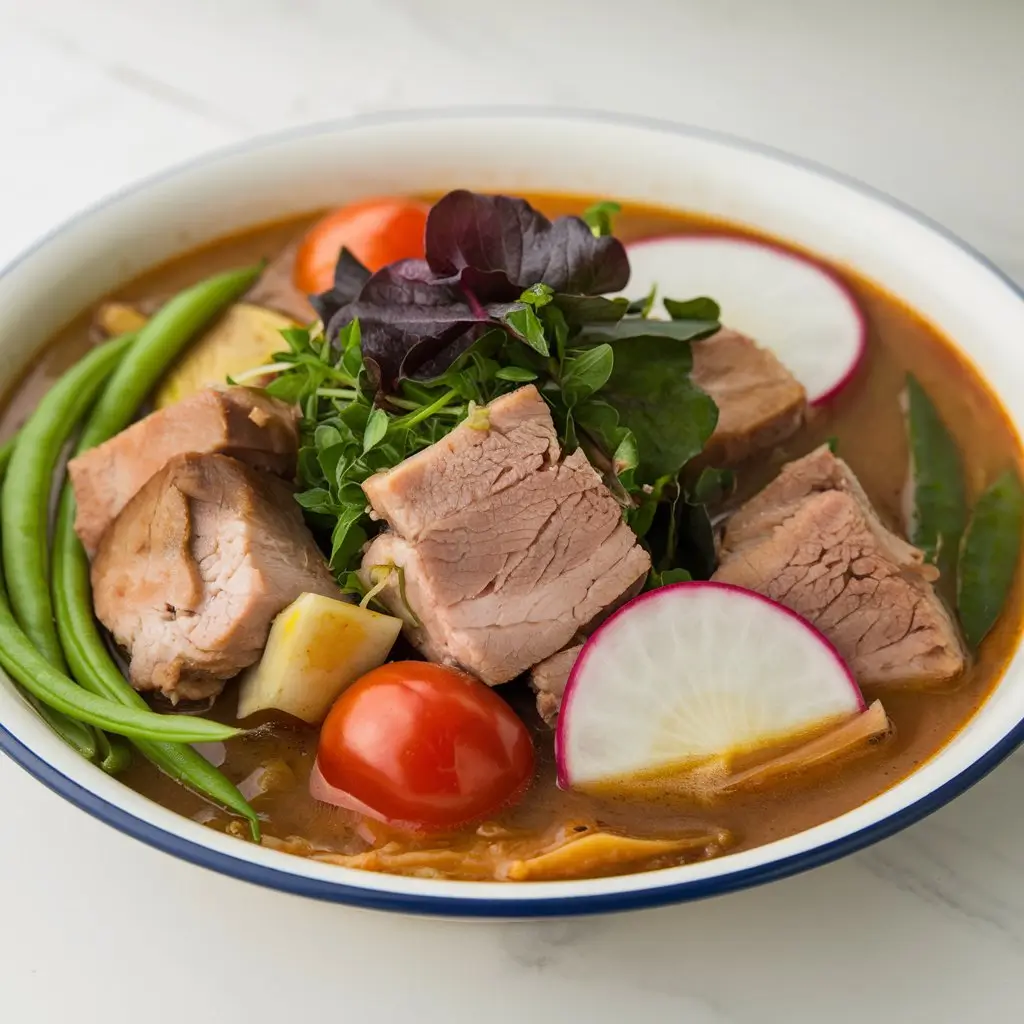
Pro Tips for the Best Sinigang recipe
If you want to take your Sinigang to the next level, there are a few important tips to keep in mind. After all, while this dish is relatively simple to make, small adjustments can significantly enhance its flavor. For this reason, consider the following expert tips to achieve a more authentic and delicious Filipino Sinigang.
1. Use Fresh Tamarind for a More Authentic Flavor
While tamarind soup mix is a convenient option, fresh tamarind provides a deeper, more natural sourness. To do this, simply boil fresh tamarind pods until soft, then mash and strain the juice before adding it to your broth. Not only does this enhance the flavor, but it also allows you to control the level of sourness.
2. Adjust the Sourness to Your Preference
Some people love their Sinigang recipe extra sour, while others prefer a milder tang. To adjust the flavor, start with a small amount of tamarind and gradually add more as needed. On the other hand, if the broth becomes too sour, a teaspoon of sugar can help balance it out.
3. Simmer the Beef for Maximum Flavor
For the best results, allow the beef to simmer for at least 45 minutes to an hour. This way, the meat becomes tender while releasing its natural juices into the broth. Furthermore, slow cooking helps develop a richer and more flavorful soup.
4. Add the Vegetables in the Right Order
Because different vegetables have varying cooking times, it’s essential to add them at the right stage. For example, firmer vegetables like radish and eggplant should go in first, while leafy greens like kangkong should be added last to prevent overcooking. As a result, each vegetable will retain its texture and contribute to a well-balanced dish.
5. Don’t Skip the Green Chili Peppers
Even if you don’t like spicy food, adding whole green chili peppers (siling haba) can enhance the overall flavor of the broth. Since the peppers remain intact, they won’t make the soup too spicy but will provide a subtle depth of heat. Of course, if you enjoy extra spice, you can crush the chilies into the broth before serving.
6. Experiment with Different Proteins
Although beef is the most traditional choice, Sinigang recipe can also be made with beef, shrimp, or fish. For instance, using beef shank (bulalo) results in a richer, meatier broth, while shrimp Sinigang is lighter and quicker to cook. Similarly, fish like milkfish (bangus) or salmon belly create a delicious seafood version of this dish.
7. Serve with Steamed Rice for the Full Experience
In Filipino cuisine, Sinigang is best enjoyed with a generous serving of steamed white rice. Since the rice absorbs the flavorful broth, it makes the meal more satisfying. Additionally, pairing the soup with a side of grilled or fried fish adds another layer of texture and taste.
Final Thoughts
At the end of the day, making Sinigang is all about personal preference. Whether you like it extra sour, mildly tangy, or with a touch of spice, these tips will help you customize the dish to your liking. So, don’t be afraid to experiment and make this Filipino classic your own!
Variations of Sinigang Recipe
One of the best things about Sinigang recipe is its versatility. While the classic beef version is the most popular, there are many ways to prepare this dish based on different preferences and ingredients. Whether you prefer seafood, beef, or even a vegetarian option, there’s a Sinigang variation for you. Let’s explore some of the most delicious versions of this Filipino favorite!
Seafood Sinigang recipe
If you’re looking for a lighter yet equally flavorful version of Sinigang, Seafood Sinigang is an excellent choice. Instead of beef, this variation typically features shrimp, milkfish (bangus), or salmon belly.
- First, seafood requires much less cooking time than meat, so it should be added near the end of the cooking process.
- Additionally, you may want to use fish stock or shrimp heads to enhance the broth’s flavor.
- Moreover, adding miso paste to Salmon Belly Sinigang creates a creamy and umami-rich twist that many Filipinos love.
Beef Sinigang recipe
For those who love a heartier, richer broth, Beef Sinigang is a fantastic alternative. Unlike beef or seafood, beef takes longer to cook, but the result is a deeply flavorful soup with tender, fall-off-the-bone meat.
- Most often, this version uses beef shank (bulalo), short ribs, or brisket.
- Because beef is tougher, it’s best to simmer it for at least 1.5 to 2 hours to achieve the perfect tenderness.
- In addition, the bone marrow from the shank adds extra richness to the broth.
Chicken Sinigang recipe
If you prefer a leaner protein, Chicken Sinigang is a wonderful option. This variation is ideal for those who want a lighter yet still comforting meal.
- Since chicken cooks faster than beef, this version takes less time to prepare.
- For best results, use bone-in chicken thighs or drumsticks to ensure maximum flavor in the broth.
- Furthermore, some people like to add a bit of lemongrass for an extra refreshing aroma.
Vegetarian Sinigang recipe
For plant-based eaters or those looking for a meatless option, Vegetarian Sinigang is just as delicious and satisfying. By focusing on fresh vegetables and plant-based proteins, this version maintains the signature sour and savory flavor of the dish.
- Instead of meat, you can use firm tofu, mushrooms, or plant-based meat alternatives.
- Additionally, adding a mix of radish, eggplant, string beans, okra, and kangkong ensures a nutritious and colorful dish.
- For a richer broth, some people use vegetable stock or kombu (seaweed) for an umami boost.
Sinigang sa Bayabas (Guava Sinigang)
While tamarind is the most common souring agent, another delicious variation is Sinigang sa Bayabas, or Guava Sinigang. Unlike the traditional sour broth, this version has a milder, slightly sweet and fruity flavor.
- First, ripe guavas are boiled and mashed to extract their natural flavors.
- Then, the guava-infused broth is combined with beef, or fish for a unique twist.
- Since this variation is less acidic, it pairs well with grilled meats or fried fish.
Final Thoughts
As you can see, Sinigang is one of the most adaptable dishes in Filipino cuisine. Whether you prefer the classic beef version, a seafood alternative, or a plant-based twist, there’s a Sinigang recipe for everyone. So why not try a different variation next time you cook Sinigang? You might just discover a new favorite!
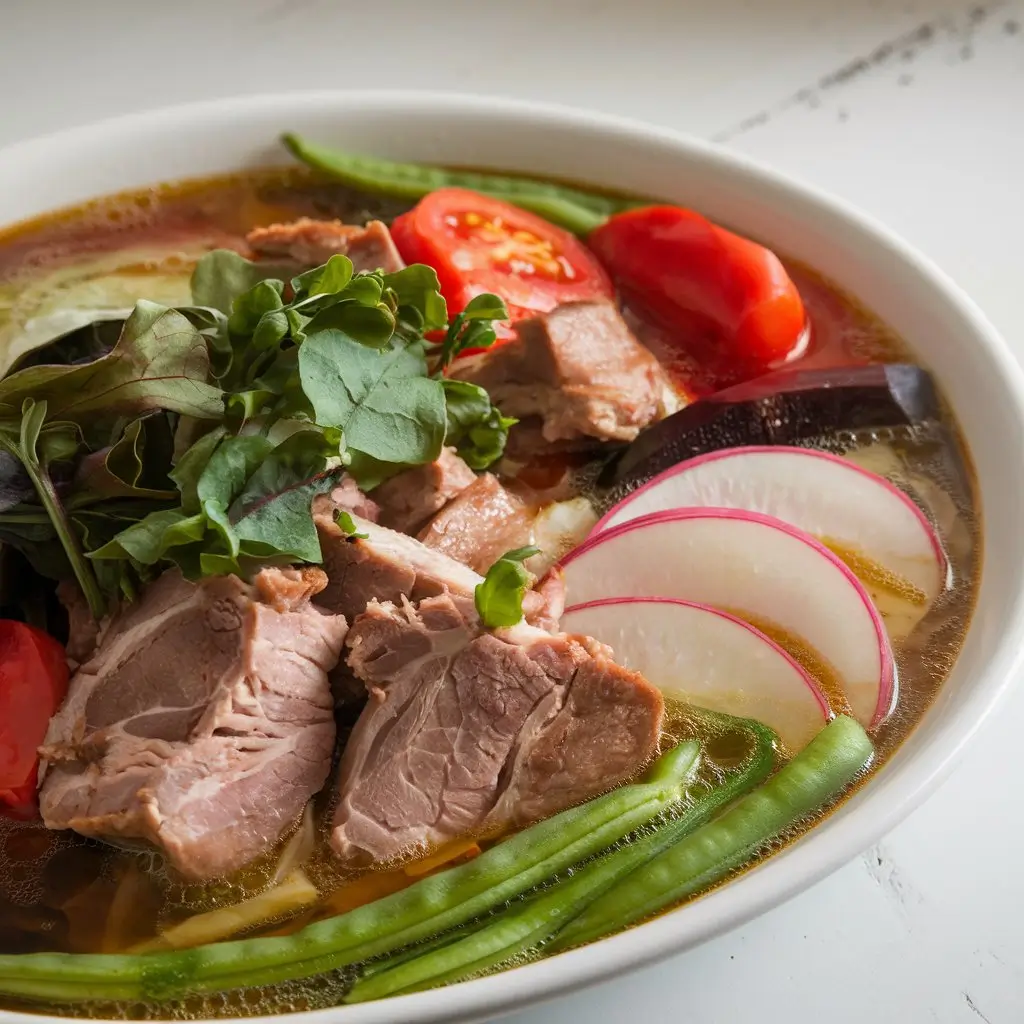
The History of Sinigang Recipe
Sinigang stands as one of the most iconic dishes in Filipino cuisine, though people often debate its origins.
Pre-Colonial Origins
Before the Spanish arrived in the Philippines in the 16th century, early Filipinos were already preparing sour-based soups. The archipelago’s abundance of tropical fruits led to the use of native ingredients like tamarind, bilimbi (kamias), and green mangoes to add sourness to various dishes.
Spanish and Chinese Influences
During the Spanish colonial period (1521–1898), Filipino cuisine absorbed influences from various cultures. Although Sinigang remained distinct from Spanish-style soups and stews, the introduction of tomatoes—brought by Spanish traders—further enriched the dish. Trade with China introduced soy sauce and fish sauce, both of which have become common seasonings in Sinigang.
Sinigang’s Evolution Over Time
As Filipino cuisine continued to develop, so did Sinigang. Originally, people prepared the dish with whatever protein was available—beef, fish, shrimp, or even venison. As regional variations emerged, different souring agents like guava, calamansi, and santol were introduced. In addition, modern versions now incorporate miso, adding an extra layer of umami to seafood-based Sinigang.
Sinigang recipe in Filipino Culture Today
Today, Sinigang recipe is considered one of the ultimate comfort foods in the Philippines. Whether served during family gatherings, rainy days, or festive celebrations, this dish continues to be a staple on Filipino dining tables. Additionally, it has gained popularity worldwide, with Filipino restaurants abroad offering their own unique takes on this classic soup. Most recently, Sinigang was even recognized as one of the best-rated soups in the world, further cementing its status as a beloved dish.
Final Thoughts
From its humble beginnings to its widespread popularity today, Sinigang has stood the test of time. Thanks to its rich history and versatility, it remains one of the most cherished dishes in Filipino cuisine. So, the next time you enjoy a bowl of Sinigang recipe, remember that you’re tasting a dish that has been loved for generations!
More Dinner Recipes to Try
If you love this Sinigang Recipe, you’ll want to try more Dinner recipes that are just as easy and delicious! Here are a few must-try options:
- Chicken Salad Chick Recipe
- Tomatillo Salsa Verde Recipe
- Air Fryer Potatoes
- Delicious Keto Chicken Recipe
FAQs
Beef belly and ribs are the most popular choices, but beef, shrimp, or fish work just as well.
Yes! Green mango, guava, or calamansi juice are great alternatives.
Place the mixture in a sealed container before storing it in the refrigerator for a maximum safety of three days. Reheat in a pot over medium heat.
Yes! Cook the beef on high pressure for 25 minutes, then add vegetables and simmer for 5 minutes.
Pair with steamed rice, crispy fried fish, or grilled meats for a complete meal.
Simply reduce the amount of tamarind or balance it with a teaspoon of sugar.
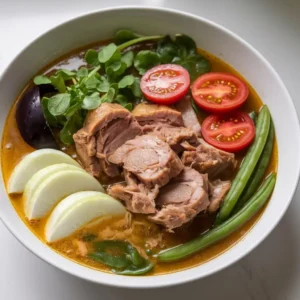
A Hearty and Tangy Sinigang Recipe for Dinner
Equipment
- Large Pot (for simmering soup)
- Knife (for chopping vegetables and meat)
- Cutting Board
- Strainer (for tamarind pulp)
- Wooden Spoon (for stirring)
Ingredients
Meat
- 2 lbs Beef belly or beef ribs
Vegetables
- Tomatoes, onions, radish, eggplant, okra, string beans, kangkong (water spinach)
Souring Agent
- Tamarind (soup base or fresh pulp)
Seasoning
- Fish sauce, salt, pepper, optional chili peppers
Optional Souring Alternatives
- Calamansi, green mango, guava
Instructions
- Prepare the Ingredients: Chop vegetables into uniform pieces. If using fresh tamarind, boil and strain the pulp.

- Sauté Aromatics: Sauté onions and tomatoes in oil until softened.

- Boil the Beef: Add beef to pot, pour water, bring to a boil, and simmer for 45 minutes-1 hour until tender.

- Add Tamarind: Stir in tamarind soup base or fresh tamarind pulp and simmer for another 5 minutes.

- Add Vegetables: Add radish, eggplant, okra, string beans, and cook. Add kangkong at the end to preserve freshness.

- Season and Serve: Season with fish sauce, salt, pepper, and optional chili for heat. Serve hot with steamed rice.

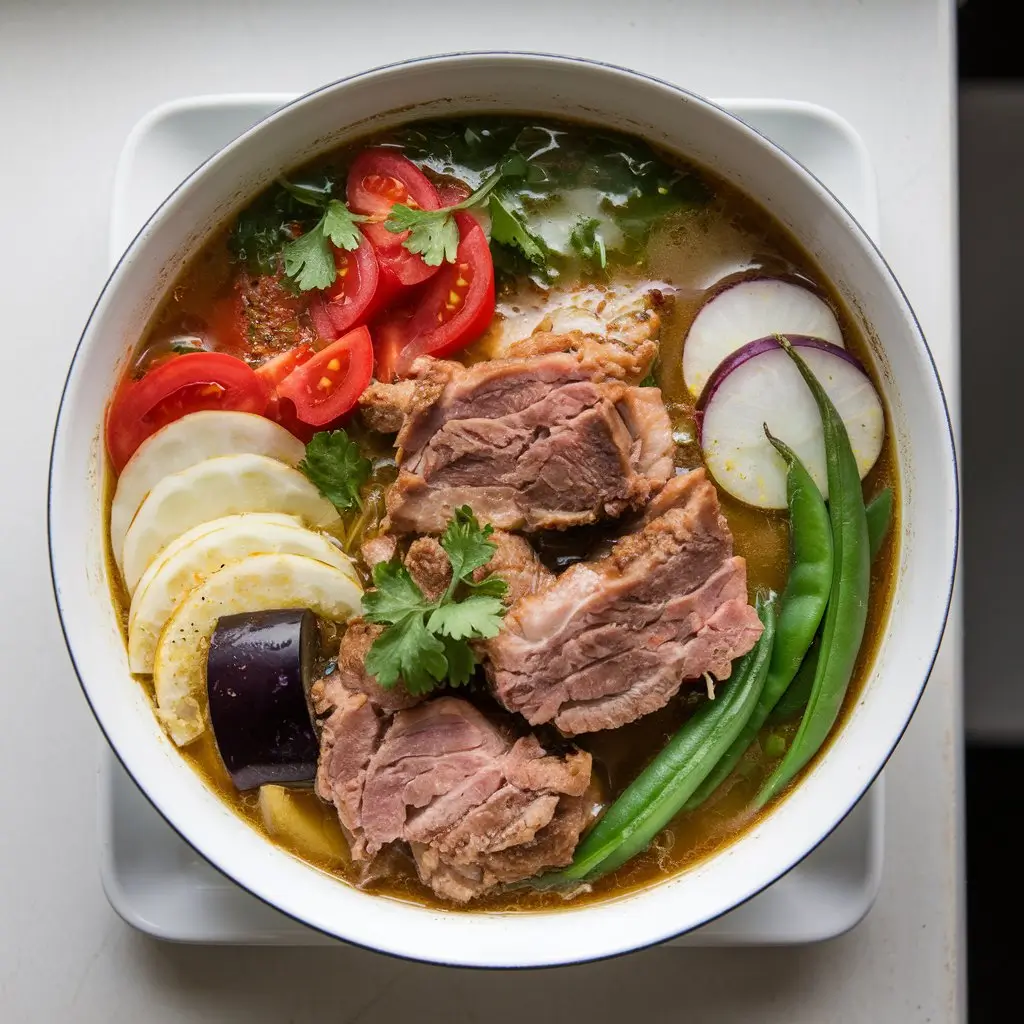
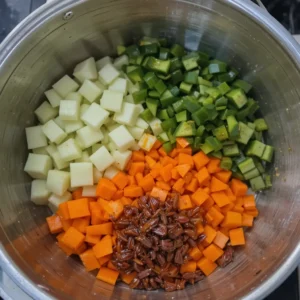
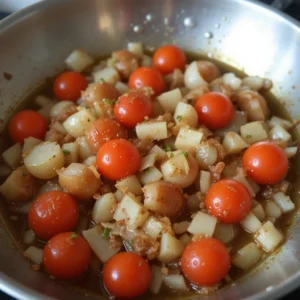
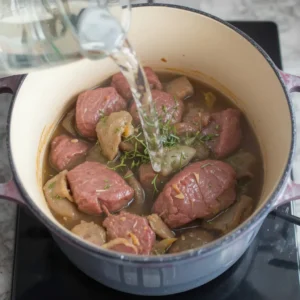
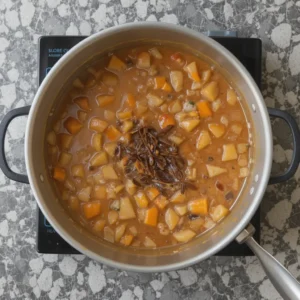

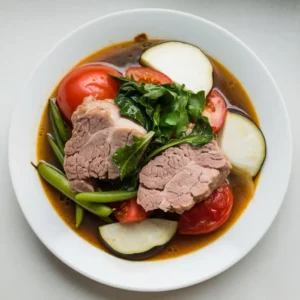
Delicious dinner 😋